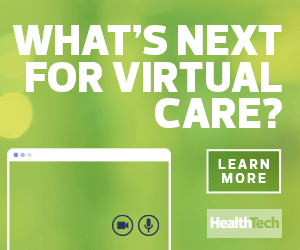And digital patient access must always be open: According to an Accenture survey, 77 percent of patients believe the ability to book, cancel or change an appointment online is important. Such access is critical as more people seek care they may have delayed due to COVID-19.
“Patients need personalized healthcare services that can meet them where they are: in their own homes,” Bruce Orcutt, vice president of marketing at the digital intelligence company ABBYY, recently wrote. The technologies, he adds, can support social distancing and public safety without sacrificing quality.
Establish a Strong First Point of Virtual Contact
The realities of the pandemic have illustrated the power of a digital platform in guiding and directing care. For example, AI and automation tools proved instrumental in screening patients for COVID-19 infection. As an added benefit, overextended care teams and administrative staff were freed up to handle more critical matters.
The technology isn’t meant to replace real-life contact but rather to supplement it, which is invaluable during a pandemic, American Telemedicine Association CEO Ann Mond Johnson recently told HealthTech.
“It just allowed the system to triage you and for you to triage yourself,” she said, citing organizations using coronavirus assessment chatbots for virtual triage. “That was really powerful: Think about the hundreds of thousands of Americans who were scared, who were alone, who didn’t know what to do.”
Still, the knowledge gathering must be a two-way street, which is why organizations should continuously analyze inputs and outputs to ensure the accuracy of the information provided. The addition of machine learning capabilities holds the promise of increased utility, including the identification of risk factors and complications based on a patient’s health history.
Setting Up a Digital Access in Healthcare
The pandemic has provided motivation for many hospitals to accelerate the development and rollout of digital patient access, according to a May report released by McKinsey.
A thorough review with key stakeholders is an excellent place to start. At a fundamental level, the digital initiative must deliver value to patients and providers alike. IT leadership should consider performing a gap analysis based on existing digital capabilities and the features to be included in desired future state.














